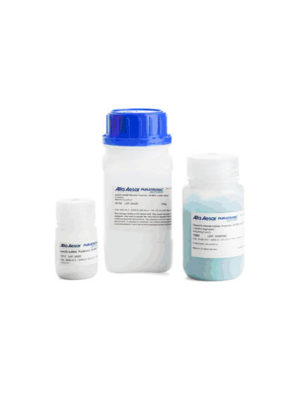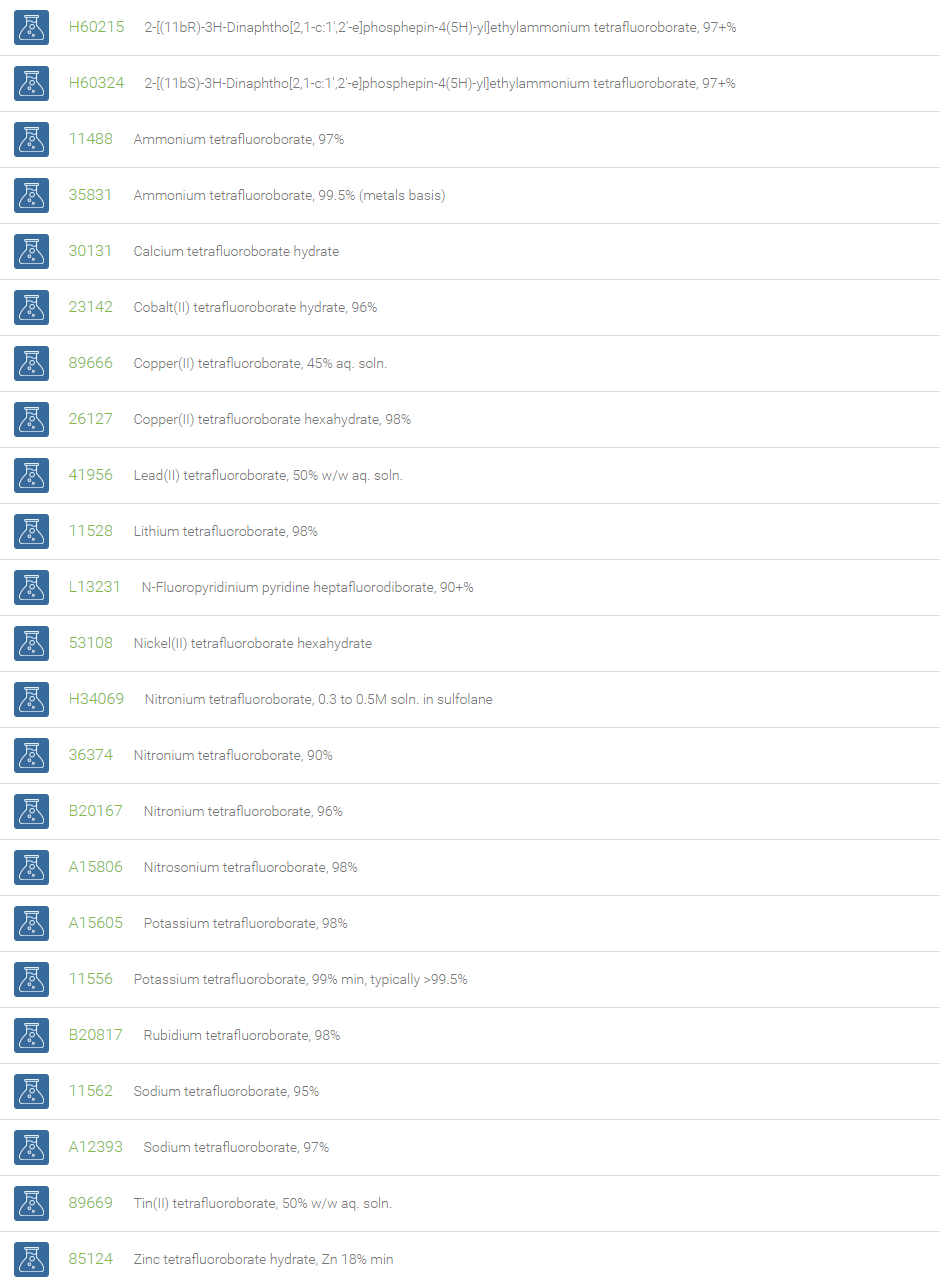Inorganic & Metal Complex Tetrafluoroborates

Inorganic & Metal Complex Tetrafluoroborates
Tetrafluoroborate is the anion BF4–, which has a tetrahedral geometry. A few examples of inorganic tetrafluoroborates are: Cu(BF4)2, AgBF4, and Fe(BF4)2. Examples for metal complex tetrafluoroborates include, but are not limited to, tetrakis(acetonitrile)silver(I) tetrafluoroborate, 2,6-bis[(di-tert-butylphosphino)-methyl]pyridine silver(I) tetrafluoroborate, and tetrakis(acetonitrile)copper(I) tetrafluoroborate.
Salts of tetrafluoroborate are more soluble in organic solvents than the corresponding nitrate or halide salts. The BF4– is less nucleophilic and basic than nitrates and halides, thus, when using salts of BF4–, one can usually assume that the cation is the reactive agent and the tetrahedral anion is inert.
The inertness of BF4– is due to two factors:
- Its symmetrical structure and the negative charge are distributed equally over four atoms and
- It has highly electronegative fluorine atoms, which diminish the basicity of the anion.
Inorganic or metal complex tetrafluoroborates are used in organic synthesis as catalysts. Inorganic tetrafluoroborates are used in photography. Metal complexes having tetrafuoroborates possess a phosphorescent property and hence they have the capacity to be used in light emitting diodes (LED).


